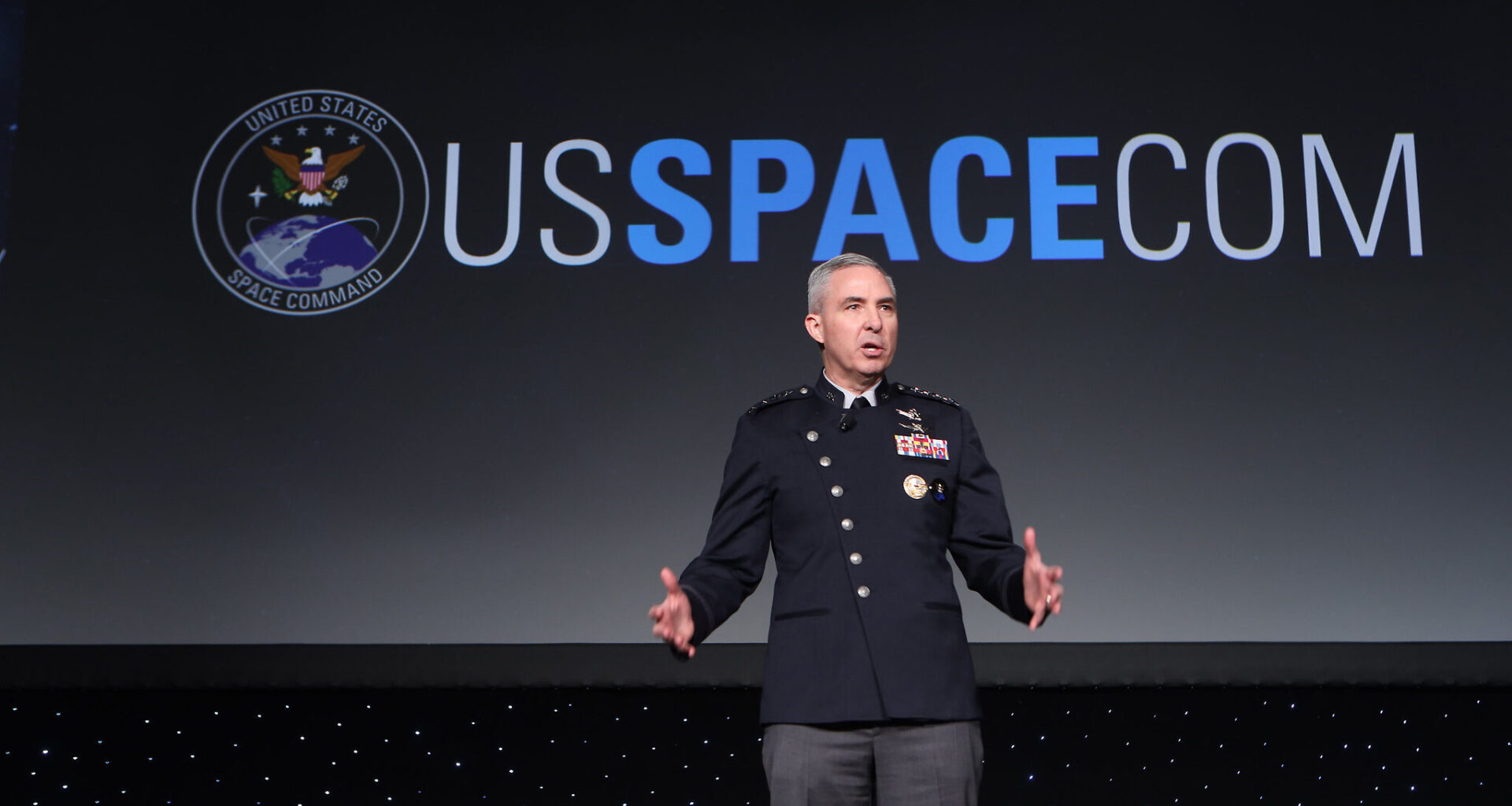SMD 2025 ― US Space Command is amping up calls for new on-orbit mobility capabilities to allow satellites to dodge threats and even pursue enemy spacecraft — capabilities SPACECOM Commander Gen. Stephen Whiting today stressed are necessary to achieving “space superiority.”
“Sustained space maneuver is crucial to our resilience and lethality through the mobility and endurance of our spacecraft. This year, we’re elevating the importance of executing maneuver without threat, especially in geosynchronous orbit, where assets like space situational awareness satellites must have the agility to move when and where they’re needed to enable space superiority,” he told the annual Space & Missile Defense Symposium in Huntsville, Ala.
For the past several years, SPACECOM has been loudly advocating for more resources to develop the enabling technologies to allow future satellites to maneuver relatively quickly, over long periods of time. These include things like next-generation propulsion systems, spacecraft to provide on-orbit refueling systems and even “gas stations” in orbit.
Those calls, however, have been met with lukewarm response from Space Force brass. The service’s fiscal 2026 budget originally contained no funds for what it calls “Space Access, Mobility and Logistics” or SAML, but according to Pentagon budget documents, the Trump administration’s final request included $14.5 million.
Whiting explained that in all other domains “military forces are built to enable maneuver warfare, in which movement and maneuver are used to generate a decisive advantage on the battlefield.” This needs to be the same in space, he said, for both defensive and offensive purposes.
“Unlike the past, Space operations today aren’t just about getting from point A to point B. They’re about maneuvering for advantage. They’re about choosing your path with purpose, making moves that surprise your opponents, protect your mission and maximize your lifespan,” Whiting said. “If a satellite has limited fuel, it can’t just swerve to avoid threats or chase new opportunities without sacrificing its mission life. It becomes predictable, vulnerable and easy for [adversaries].”
On the other hand, Whiting elaborated, if a satellite could “maneuver freely, changing routes on a whim, making such invasive moves or repositioning itself unpredictably,” it could then move “to gain the upper hand, or even go on the offensive if necessary.
“That’s maneuvering for advantage: moving not just to survive, but to outsmart, outpace and outfight any potential opponent.”
In his wide-ranging presentation, Whiting also provided updates on a number of SPACECOM’s recent efforts — including progress in fleshing out Operation Olympic Defender (OOD). Australia, Canada, France, Germany, New Zealand and the United Kingdom participate in OOD, which is essentially a plan for how those allies will fight together in space as a multinational force.
“We reached initial operational capability, or IOC, earlier this year, together; we’ve conceptualized requirements for our multinational course; developed the first MNF [multinational force] OOD concept of operations; outlined national contributions in the MNF OOD operational order; and created a space domain awareness conference,” he said. And this spring, the OOD allies had signed off on their “first ever” campaign plan with an eye to achieving full operational capability, he added.
SPACECOM also completed its missile warning/missile defense data fusion pilot launched last year and managed by the Joint Operations Center, Whiting said. The effort involved integrating numerous data streams into a common operating pictures — what he called “a single pane of glass” — that in effect was able to get “more bandwidth into the brains of our analysts and operators for faster, more accurate analysis, and ultimately better, quicker decision making.”
The next SPACECOM pilot project for data fusion “will expand on this foundation by incorporating a suite of space attack assessment tools to enhance combat and level assessments tasking and planning capabilities in a protracted conflict,” Whiting said.

